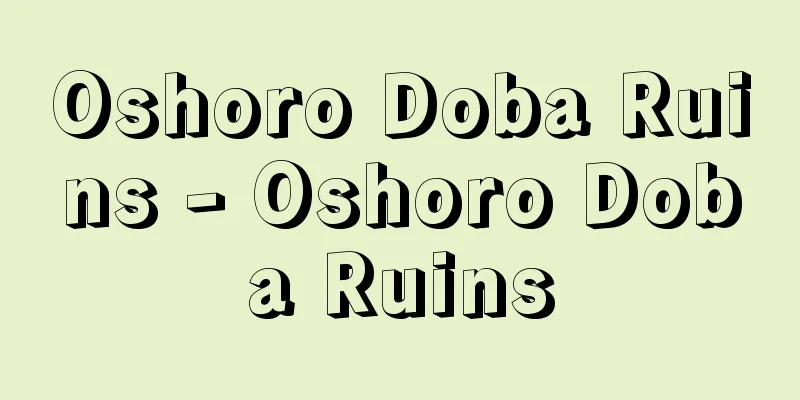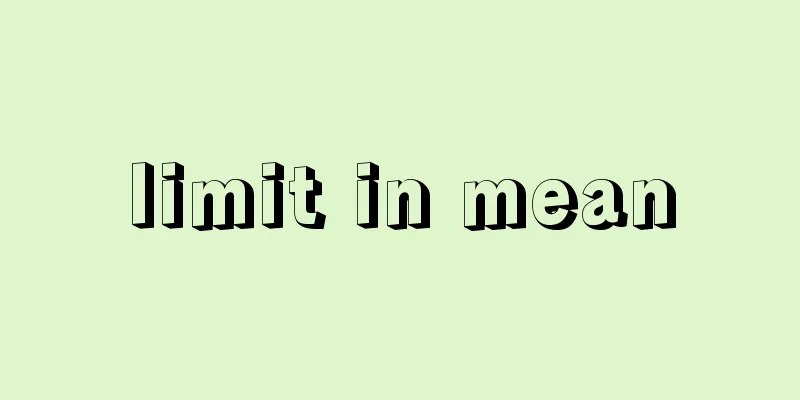Indian dance - indobuyo (English spelling) indian dance

|
When talking about Indian dance, people tend to only talk about classical dance, but if you actually go to India, you will see that there are many different types of dance. Broadly speaking, there are three types: classical dance, country dance, and tribal dance. [Masa Ichikawa and Kazuko Kuniyoshi] Classical DanceIndian dance has ancient origins, and the world's oldest Sanskrit drama treatise, Natya Shastra, contains detailed descriptions of dance stories, theories, and techniques. The classical dances that remain today can be roughly divided into five categories: Kathakali from around Kerala, Odissi from Orissa, Manipuri from Manipur, Kathak from around Delhi, and Bharata Natyam from around Chennai (Madras). These take their subject matter from India's oldest holy book, the Rig Veda, and the two great national epics, the Mahabharata and the Ramayana, and the theme of classical dance is the manifestation of mythology through the bodies of living people. In the past, all classical dances were attached to temples, and temples always had a specific dance hall, but the relationship between religion and dance has gradually separated, and dance has begun to be performed in urban theaters. Tagore's poems and other works have also begun to appear as themes. Classical dance is often dedicated to Shiva, the god of dance, or Kali, the goddess of destruction, and the emblems of those deities are displayed on stage during performances, probably as a vestige of the time when it was performed in temples. (1) Kathakali: A highly theatrical form performed by men, in which the story unfolds through mudras (gestures of the hands and fingers). (2) Odisi: This is a dance performed by a woman alone, with lyrical and sensual upper body movements. Most of the dances are based on the myths of Krishna. (3) Manipuri Manipuri also has a faith in Krishna, but the inhabitants of the state of Manipur, who believed in Shiva until the 18th century, later changed to a faith in Vishnu. Compared to other classical dances, Manipuri has a predominance of Southeast Asian upper body movements. (4) Kathak is a combination of Hindu and Islamic elements, with almost no upper body movement and almost no mudra of the hands. However, the feet are the most vigorous, and the Vishnu faith is also evident. (5) Bharat Natyam This is a solo dance performed by a female dancer with vigorous footwork and well-balanced hand movements, and can be said to be the most fascinating classical dance. [Masa Ichikawa and Kazuko Kuniyoshi] Folk DanceIt is associated with Hindu folk rites and ceremonies and is performed to coincide with seasonal events, such as the Chhau, seen in Bengal and Orissa. Chhau in Seraikela, Bihar, is a three-day spring festival performed by 13 devotees representing all castes. The dancers wear masks and make a procession into a temple dedicated to Lord Shiva. A chalice is carried and placed in the temple by a dancer dressed as a woman. This is a folk festival based on the belief in Lord Shiva, who protects river floods, and the dance is offered as a sacrifice to Lord Shiva. Folk dances are always performed during Holi, Basanta, Panchami and other seasonal festivals. [Masa Ichikawa and Kazuko Kuniyoshi] Tribal DanceThere are over 200 dances performed by outside caste groups in India, and many of them have little influence from Hinduism and take the form of rituals from indigenous folk religions. The Koya people of Odisha dance to appease the soul of the Earth Mother Goddess. It is a complex, spiral-like dance in which women keep the rhythm with sticks with bells attached, while men wear buffalo horns on their heads and dance while beating drums. There are many such dances in India that are closely linked to indigenous religions. [Masa Ichikawa and Kazuko Kuniyoshi] Indian DancerIndian classical dance became well-known abroad in the 20th century, when Uday Shankar and others gave performances in Europe, America and other countries, spreading its unique appeal to the world. Since then, dancers such as Shanta Rao, Mrinalini Sarabhai, Indrani Devi, Krishnan Nair and Sonal Mansingh have followed suit. [Masa Ichikawa and Kazuko Kuniyoshi] "Anthropology of Asian Dance: Dance Field Notes" by Miyao Yoshiyoshi (1987, PARCO Publishing Bureau)" ▽ "Kathakali Kaleidoscope" by Kono Ryosen (1988, Heikawa Publishing)" ▽ "Dance of the World: Ethnic Dances, Their History and Culture" by Gerald Jonas, translated by Tanaka Sachiko and Yamaguchi Junko (2000, Taishukan Shoten)" ▽ "Kapila Vatsyayan Traditional Indian Theatre; Multiple Streams (1984, National Book Organization, New Delhi)" [References] | | | | | | |Source: Shogakukan Encyclopedia Nipponica About Encyclopedia Nipponica Information | Legend |
|
インドの舞踊というと一般には古典舞踊だけを取り上げる傾向があるが、実際インドに行ってみると、さまざまな舞踊があることがわかる。大きく分ければ、古典舞踊classical danceと、民俗舞踊country danceと、部族舞踊tribe danceの3種類である。 [市川 雅・國吉和子] 古典舞踊インドの舞踊の起源は古く、世界最古のサンスクリット演劇論書『ナーティヤ・シャーストラ』には、舞踊の物語や理論、技術について詳しく書かれている。現在も残っている古典舞踊はおよそ次の五つに分類される。ケララ州周辺の「カタカリ」、オリッサ州の「オディシ」、マニプル州の「マニプリ」、デリー周辺の「カタック」、チェンナイ(マドラス)周辺の「バーラタ・ナーティヤム」である。これらはインド最古の聖典『リグ・ベーダ』や二大民族叙事詩『マハーバーラタ』『ラーマーヤナ』などに題材をとっており、現在生きている人の肉体によって神話を顕現するというのが、古典舞踊のテーマである。かつて古典舞踊はすべて寺院に付属しており、寺院にはかならず特定の踊り場があったが、しだいに宗教と舞踊の関係が分離し、都会の劇場で上演されるようになってきている。テーマにもタゴールの詩などが登場するようになった。古典舞踊は舞踊の神シバや破壊の神カーリーに捧(ささ)げられることが多く、上演の際その神の紋章が舞台に掲げられる。おそらく、寺院で踊られていたことの痕跡(こんせき)であろう。 (1)カタカリ 男が演ずる演劇性の強いもので、ムードラ(手指の身ぶり)によって物語が展開される。 (2)オディシ 女1人で踊られるもので、上半身の動きが叙情的、官能的である。そのほとんどがクリシュナ神話を題材にとっている。 (3)マニプリ マニプリにもクリシュナ信仰があるが、18世紀までシバ信仰であったマニプル州の住民は、その後ビシュヌ信仰に変わった。マニプリは他の古典舞踊に比べて、東南アジア的な上半身の動きが優越している。 (4)カタック ヒンドゥー教的要素とイスラム教的要素が交じり合ったもので、上半身の動きはほとんどなく、手で語るムードラもほとんどみられない。ただ、足はもっとも激しく、やはりビシュヌ信仰がみられる。 (5)バーラタ・ナーティヤム 足の激しさと手の動きの調和がとれた女性舞踊手のソロ・ダンスで、もっとも魅力的な古典舞踊といえる。 [市川 雅・國吉和子] 民俗舞踊ヒンドゥー教の民俗儀礼や祭式と結び付いて、季節の行事にあわせて踊られるもので、ベンガル州からオリッサ州にみられる「チョウ」などはその好例である。ビハール州セライケラのチョウは春の3日間にわたる祭りで行われ、あらゆるカーストを代表する13人の信徒によって演じられる。踊り手は仮面をつけて行列をつくり、シバ神が祀(まつ)られている寺院に参入する。女性の扮装(ふんそう)をした舞踊手によって聖杯が運ばれ安置される。これは、川の氾濫(はんらん)を守るシバ神への信仰が基礎となっている土俗的な祭りで、踊りはシバ神への犠牲として捧げられる。民俗舞踊はホーリ祭、バサンタ、パンチャミその他季節の祭りにはかならず行われる。 [市川 雅・國吉和子] 部族舞踊インドで200を超えるカースト外部族の舞踊で、ヒンドゥー教にほとんど影響されず、土俗民間宗教の儀礼という形式をとった舞踊が多い。オリッサ州に住む民族コヤは大地母神を鎮魂するために踊る。女は鈴のついた杖(つえ)でリズムをとり、男たちは野牛の角(つの)を頭につけ、ドラムをたたきながら踊る、複雑な一種の渦巻状の踊りである。土着的宗教に密着したこうした舞踊がインドには数多い。 [市川 雅・國吉和子] インド舞踊家インド古典舞踊は、20世紀になって海外にも著名となり、ウダイ・シャンカールらが欧米その他に公演活動を行い、その独得の魅力を世界に広めた。以後、シャンタ・ラオShanta Rao、ムリナリニ・サラバイMrinalini Sarabhai、インドラニ・デビIndrani Devi、クリシュナン・ナイルKrishnan Nair、ソナル・マンシンSonal Mansinghらの踊り手が続いている。 [市川 雅・國吉和子] 『宮尾慈良著『アジア舞踊の人類学――ダンス・フィールド・ノート』(1987・PARCO出版局)』▽『河野亮仙著『カタカリ万華鏡』(1988・平河出版社)』▽『ジェラルド・ジョナス著、田中祥子・山口順子訳『世界のダンス――民族の踊り、その歴史と文化』(2000・大修館書店)』▽『Kapila VatsyayanTraditional Indian Theatre ; Multiple Streams(1984, National Book Organization, New Delhi)』 [参照項目] | | | | | | |出典 小学館 日本大百科全書(ニッポニカ)日本大百科全書(ニッポニカ)について 情報 | 凡例 |
>>: Indophenine reaction - Indophenine reaction
Recommend
Spinal cord tumors
Concept: Spinal cord tumors are neoplasms that dev...
Appomattox
It is famous as the place where Confederate Genera...
Price theory
A branch of economics that seeks to clarify the pr...
Birth Cave - Ubutate no Iwaya
…Caves are ambiguous places where images of life ...
Tozama Daimyo - Tozama Daimyo
One of the daimyo classifications in the Edo peri...
Zheng Zhen (English name)
1806‐64 A Chinese scholar and poet in the late Qin...
Stanley, W.
…Westinghouse saw the future potential of AC tech...
Alexandra Birdwing - Alexandra Birdwing
...The natural wingspan of this specimen reaches ...
Alexandre harmonium
… [Reed Organ] In the mid-19th century, a new typ...
Angular stone tools
It is a type of weapon-shaped stone product from t...
Adrenergic nerves
A general term for nerve fibers that release epine...
Inoue Ihei
Year of death: 1881 (Meiji 14?) Year of birth: 182...
Aquilegia longissima
…[Munemin Yanagi] [Michio Tamura]. … *Some of the...
Allah - Allāh (English spelling)
The name of the one God in Islam. Etymologically,...
Golmud - Golmud
A city in central Qinghai Province, China. Populat...









